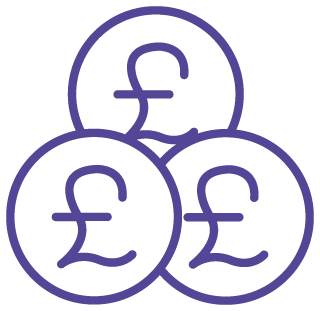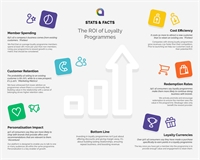30Nov
Do you truly value what you don’t pay for?
If customers have completed all the actions you asked of them and achieved the reward, why do so many of them not complete the final step and claim their reward? Does the reward have less value just because it was free or was the sheer act of being rewarded and completing the goal enough? Would it have been enough if there was no reward?
Many businesses operate their entire business model on the breakage point, banking on the fact that sometimes up to 50% of users won’t claim their reward.
 |
 |
 |
 |
| Shop |
Collect Points |
Achieve Target |
Redeem Reward |
With loyalty, it is only when a customer receives their reward that they can see a tangible benefit to their membership. That reward doesn’t have to be a physical item, it could be donation to their favourite charity, the point is it has to have value to the member.
We know that customers who consistently redeem points or use their rewards are up to 6 times more likely to remain loyal for longer. We have a whole article on loyalty breakage and why it isn’t a good thing. So we know we want customers to redeem their rewards and value the rewards available so how do we go about achieving that goal.
If your loyalty programme operates on a one size fits all policy with all rewards being available to all the customers and all the earning and redemption mechanics being the same then you are probably under-rewarding your top customer segments and over rewarding the bottom segment.
The volume and quality of data you have available through a good loyalty programme can be used to your advantage. Spend some time analysing it to see where the trends are, when your customers start to change their buying behaviours and what triggers the change. Almost every company seems to have a loyalty programme now so you need to think bigger and implement a loyalty strategy that runs right through the heart of your business and penetrates every department. This way you know that at every touchpoint loyalty is being thought about. This way you start to get better and better data and your loyalty programme becomes a real thing that people talk about, not just a card in a wallet.
Take it right back to when you have created reward charts for your children, grandchildren, nieces or nephews and think about how you communicated and what the reward was. The likelihood is that the child knew exactly what they were working towards, they had a goal to achieve and they really wanted that goal, because they had chosen it. You set out clear visual instructions of what they had to do to achieve and they ticked the chart off each time they got a step closer. You were clear on what would and wouldn’t get the next tick and when they reached the final step the joy at receiving the reward was tangible. They remember the rewards they achieved and what they had to do to achieve them.
How can you bring the same level of anticipation, excitement, and communication to your loyalty programme?
Of course, we are all a bit more cynical than our 8-year-old selves, but we can still get the same level of achievement and desire. Why not let your customers set the reward? By all means give them options but ask them to set a goal and see what that does to their desire to achieve.
Why not let them choose the earning metric?
If you have studied your best customers, you should know what behaviour you want everyone else to emulate so why not give your customers options. It could be buying from you every month for a quarter and allowing them to build smaller prizes into a bigger prize if they buy from you every month over a whole year. Or it could be buy 5 new products in the next 3 months, or spend 10% more than they did last year.
Why not get them engaged with updating the progress of their goal.
Let them know they have achieved the next ‘tick’ and ask them to log in and stamp it. Maybe even give them an opportunity for a surprise and delight win each stamp?
Getting customers engaged from the outset at a personal level is key to getting them to value the programme, your business and the relationship.

About the Author
Stream’s co-founder, Melanie, became the first British woman to become accredited with the CLMP from The Loyalty Academy. Passionate about all things loyalty, Melanie cuts through the technical jargon and gets to the real business issue. Melanie loves to develop engaging digital solutions that appear simple whilst creating long lasting partnerships that add value to all.
Attachments
Related
Show me a person who has never made a mistake and I'll show you someone who has never achieved m...
Read More

Chatbots are increasingly becoming a “must have” for almost any size of business. We are now worki...
Read More

There are three customer profiling methods that can be utilised to segment and form a profile of you...
Read More

Investing in loyalty programmes isn't just about offering discounts or giving margin away. It�...
Read More

Come with us on a journey through the ages of loyalty; from stamps to apps - it's been a rollerc...
Read More